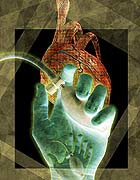
TUESDAY, July 19 (HealthDay News) — “Broken heart syndrome” — a temporary form of acute heart failure caused by a sudden weakening of the heart muscle — may affect more people than previously thought, a new study suggests.
This condition, also known as “stress cardiomyopathy,” usually affects postmenopausal women and is typically triggered by a profoundly stressful event, such as a break-up, domestic abuse or the unexpected death of a loved one. In this study, however, researchers found this condition may also develop in younger people, men and even those who cannot identify an a precipitating stressful event.
Researchers analyzed 256 stress cardiomyopathy patients in seven tertiary care centers in both Europe and North America over the course of five years. The vast majority (81 percent) of the study’s participants were postmenopausal women; 8 percent were 50 or younger, and men accounted for 11 percent of the cases.
In 71 percent of the patients, the researchers identified a significantly stressful event less than 48 hours before the development of the heart condition. Of those cases, 30 percent of the triggers involved emotional stress, and 41 percent were the result of physical stress. At the time of treatment, 87 percent of patients had abnormal electrocardiograms (tests that record the electrical activity in the heart to identify those at risk for heart attack).
Although they found clearly identifiable stressors in just two-thirds of patients, the researchers pointed out previous studies reported such emotional or physical triggers in up to 89 percent of those with broken heart syndrome.
“Our large multi-center cohort demonstrates that the absence of an identifiable stressful event does not rule out the diagnosis, and, hence, precipitating mechanisms may be more complex, such as involvement of vascular, endocrine and central nervous systems,” the study’s authors wrote in a journal news release.
Moreover, the researchers revealed coronary angiography (a common heart imaging test) showed healthy coronary arteries in 75 percent of the patients.
In addition, cardiovascular magnetic resonance (CMR) imaging allowed the researchers to diagnose stress cardiomyopathy through symptoms such as a swelling of the heart, a distinct appearance of the moving heart muscle known as ballooning patterns, reduced function in the patients’ left ventricle, markers for heart inflammation and the absence of dead tissue or excess connective tissue.
The researchers noted that CMR imaging may provide specific clues to help doctors diagnose and manage stress cardiomyopathy earlier. The reduced function in the left ventricle, for example, is generally reversible.
The study’s authors concluded the broader range of people that could develop stress cardiomyopathy could make the condition more difficult to detect than previously thought. Greater awareness of their findings, they pointed out, is critical for the proper diagnosis and treatment of the condition.
The study was published in the July 20 issue of JAMA.
More information
The National Institutes of Health provides more information on stress cardiomyopathy.

